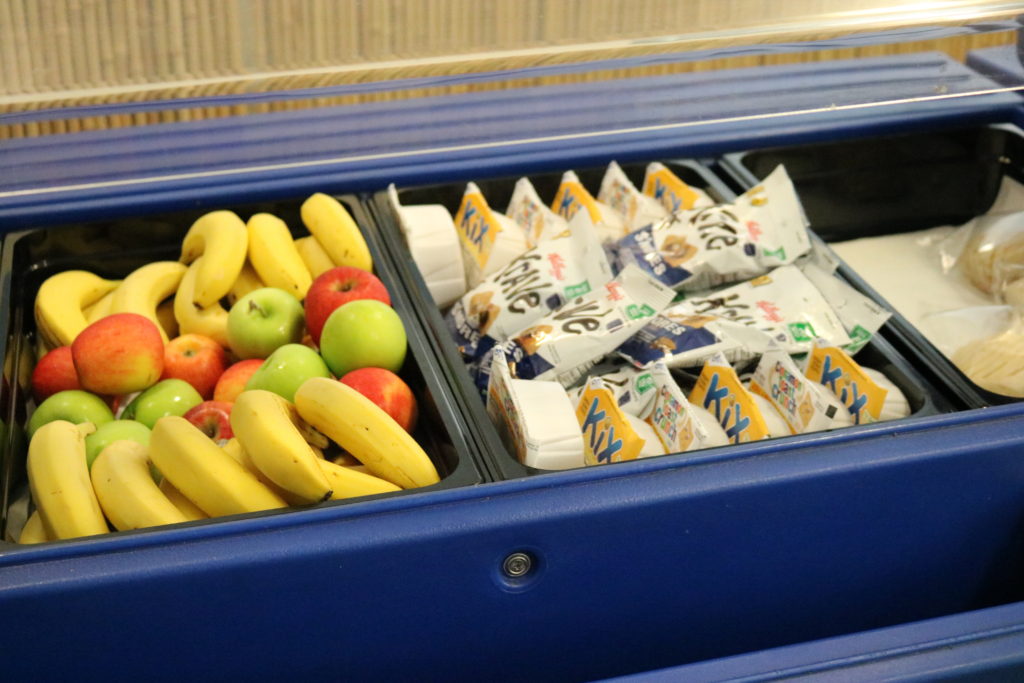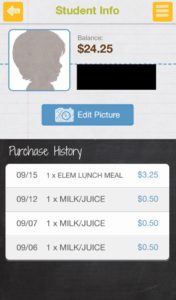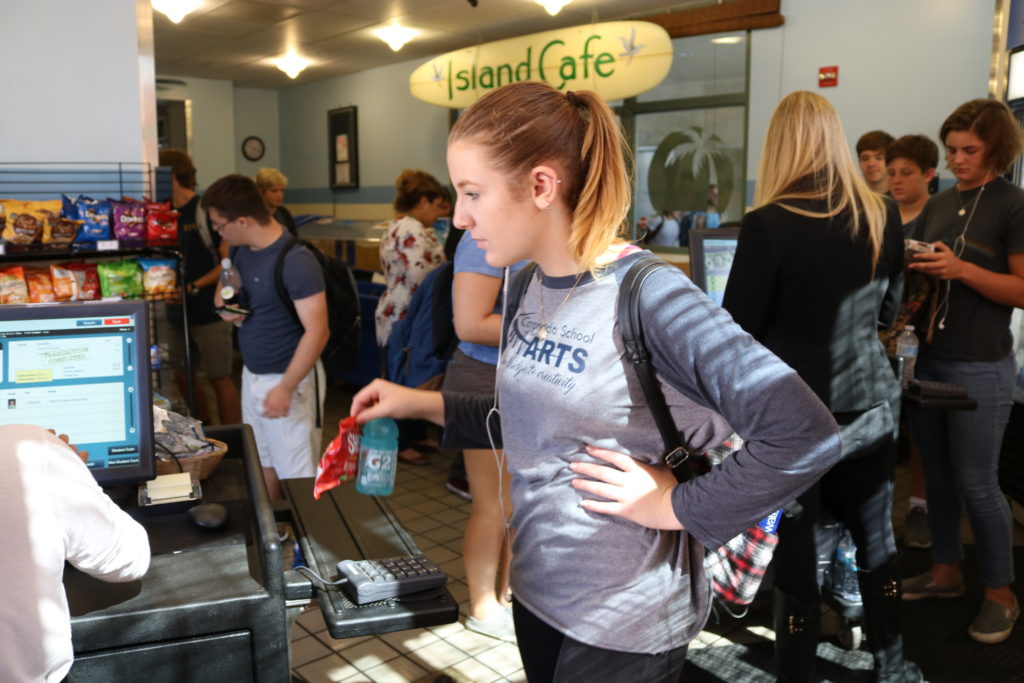
To look at the school lunch menu, you’d think a new fast food joint had set up shop in the district’s five campuses. There are pizzas, hamburgers, hot dogs, cookies and chips, and chocolate milk to wash it all down. But you’d be wrong. The quality and nutritional value far exceed the fare at a McDonald’s or Jack in the Box.
Whether it’s corn dogs or potato chips “we try to get the healthiest version possible,” said Charity Johnson, who heads the district’s nutrition department.
All the bread is whole grain. Hamburgers are 100% beef. There are few fillers or byproducts in anything served. Hot dogs are nitrate free and come from Eisenberg, a high-end Chicago deli.
Even the pizza is specially formulated by Papa John’s to meet Coronado’s exacting standards. “It’s a better version, but the kids don’t know it,” said Johnson.
Students can select fresh fruits and vegetables just days away from California’s Central Valley. “The produce is picked on Monday, shipped to us on Wednesday and the kids are eating it on the line on Thursday,” Johnson said.
 The emphasis on quality seems to be paying off.
The emphasis on quality seems to be paying off.
“The school lunches are really good. I really like their orange chicken on Fridays. Not the best like Panda Express, but it’s pretty good,” said Addie Cornelius, a fifth-grader at Village Elementary. She also loves the salad bar. “You can pick whatever vegetables you want.”
Students are required to take a fruit or vegetable. Among elementary school students at least, a high percentage of the fruits and vegetables are consumed. No more than two out of ten salads wind up in the trash, according to Addie.
The food is not only flavorful and healthy, it costs less. Middle school and high school students pay $3.75 per meal. Pre-school and elementary pay $3.25. Each meal includes an entrée, salad, fruit, milk or juice, cookie or chips. The older kids pay more because they have more choices, Johnson explained.
Because Coronado is part of the National School Lunch Program (NSLP), it receives federal/state subsidies. These pay for 18% of the cost. Coronado Unified School District (CUSD) also contributes money from its general fund. This year the school district gave the nutrition department $82,000, according to Donnie Salamanca, Senior Director of Business Services for CUSD.
The program also relies on fundraising initiatives. Three times a month Kona Ice sells shaved ice near Village Elementary, the middle and high schools and at Strand Elementary. Twenty percent of the proceeds go to the CUSD lunch program. “Last year we made $3,200,” Johnson said. The nutrition department also gets 15% of the money deposited into campus vending machines.
To save the district money, Johnson is working to make the program self-sustaining by making the food appealing so more students eat on campus. So far only 700 of the district’s 3,000 students participate.
Many kids bring their lunch or go home to eat, including Addie. As much as she likes the school fare, she prefers packing her own lunch on most days. “You have a lot more choices,” she said.
Efforts to improve the nutritional quality of school lunches began two years ago to comply with the requirements set by the NSLP. In December of 2010 Congress passed the Healthy, Hunger-Free Kids Act. It was inspired by Michelle Obama’s “Let’s Move Initiative” that began the same year. It encouraged kids to get physically active and eat nutritious foods, including whole grains, low-fat dairy and fresh fruits and vegetables.
The Trump administration recently scaled back these standards, allowing more white flour and sodium. Coronado is sticking with the Obama era rules. “Even if the government came along and said you can serve whatever you want, I probably wouldn’t,” Johnson said.






